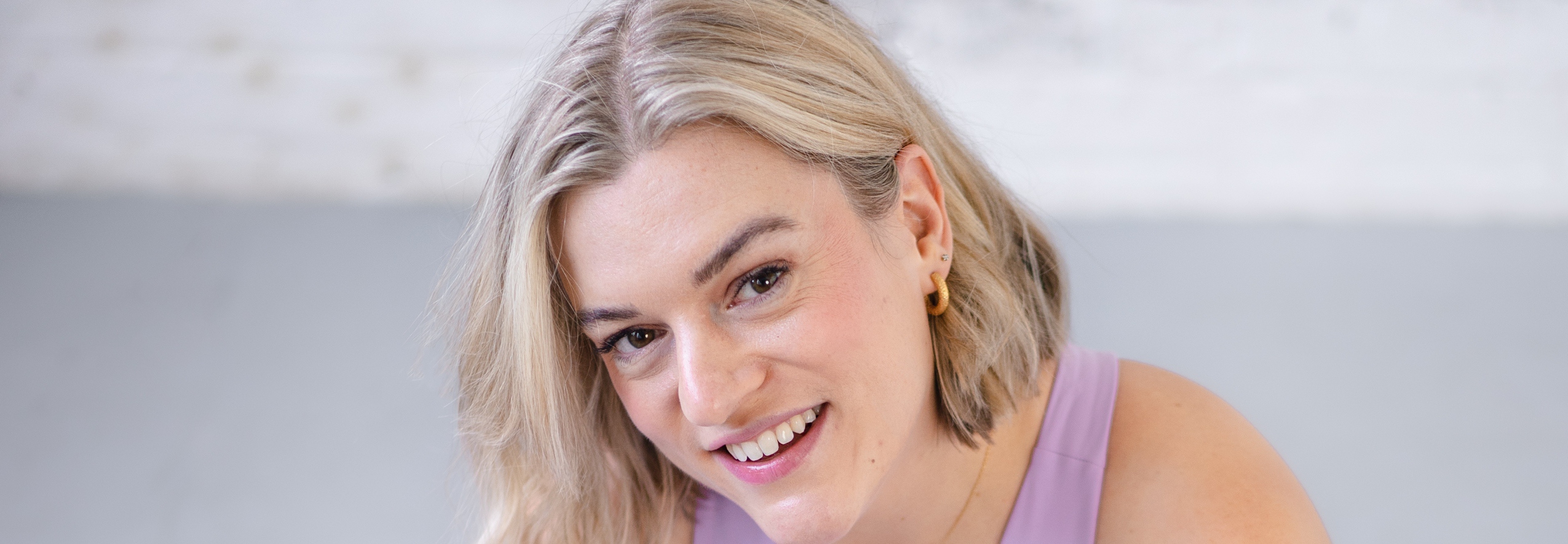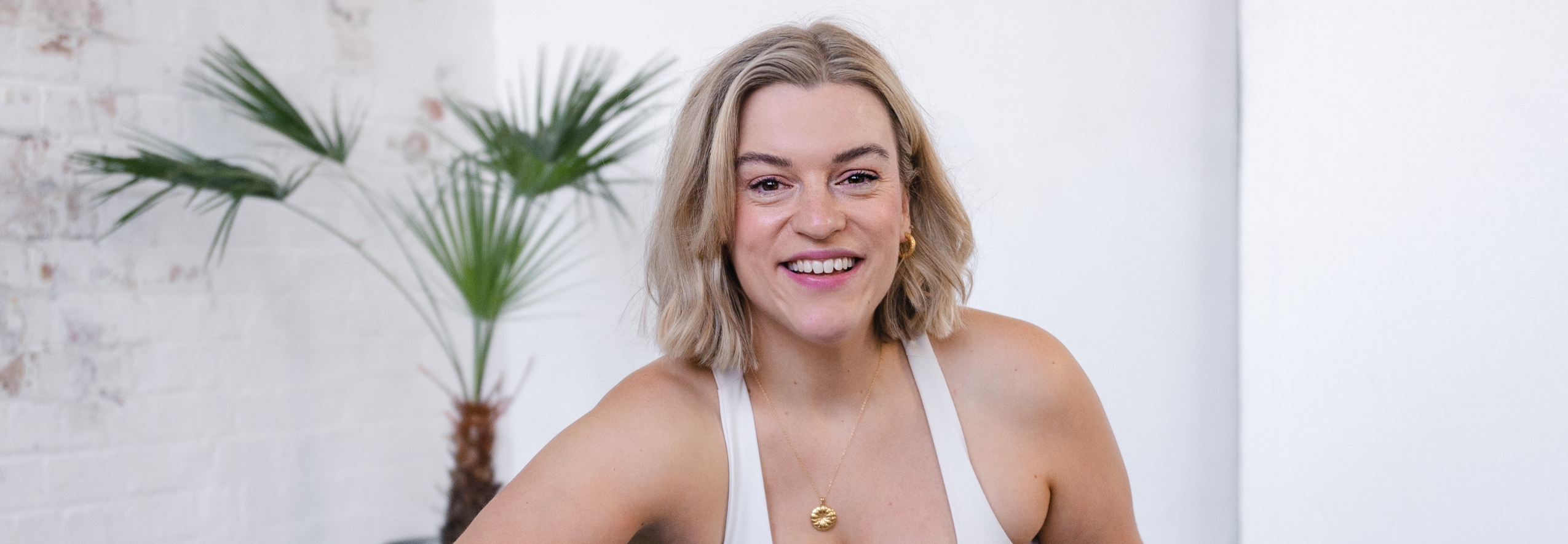The quest
for better.
Sign up to our mailing list to discover the future of beauty and wellness.
9 Minute ReadInterview by David Levesley
30.11.22
Exercise, like so much of health and wellbeing, often feels like there's an objectively true set of rules we must all follow lest we collapse into a jibbering wreck. But after decades - if not centuries - of a belief prescriptive diets and fitness plans are a panacea for everyone, increasingly experts are recommending we try to find ways of doing things specifically tailored to our needs. Enter: intuitive fitness.
While much of modern health can be based on laser-focused preventative measures to prevent issues down the line, intuitive fitness is a little bit less intense to wade into. In fact, its very purpose is to diffuse the intensity we can often feel about exercise. It's a simple premise: don't do the types of activity you're told to do unless they're things you enjoy. It sounds simple. Almost terrifyingly simple. But there are many people promoting it as the way to create sustainable, meaningful fitness practices.
One of those people is Tally Rye, a PT and spin instructor who has developed a huge following with her holistic but effective fitness beliefs. "Intuitive fitness, or intuitive movement, is a way of thinking about exercise that stops us from focusing on using exercise as just a tool to manipulate what we look like," she explains over the phone. "We're trying to shift the mindset to focus on how we feel." This means choosing workouts we enjoy, noting if our body reacts poorly to a type of exercise we thought we were meant to do, and in general allying with your physiology rather than antagonising it.
"Traditionally, in the health and fitness space, we've always been taught to exercise as a way to earn and burn food, and sculpt our body to look a certain way. And I think that acquires a lot of pressure. It's difficult for people to have a consistent relationship with exercise." For Tally, this 'all or nothing' approach means people often hit the gym hard before an event or holiday, and then struggle to keep it up once said deadline is over. "Because it feels like a chore, it feels like something you have to do."
Rye's second book, The Train Happy Journal, is a more practical follow-up to her first book Train Happy. In this outing, she's helping readers to implement the relationship to exercise she praises, focusing on a 30-day journaling challenge for people to restructure how they work out. "There can be a lot of kind of guilt, anxiety, and shame around exercise when we put so much pressure on having an aesthetic outcome," she explains. "So this is a tool to help people get going on their own journey, so that they can build a relationship for life rather than just for a 12-week plan."
Below, she takes us through some of the fundamental pointers for anyone, with any type of fitness experience, on how to be more intuitive.

Firstly, connect with your body in a way that you start to pick up on your own cues on when to move and to rest. I think some people struggle with that, which is why I wanted to create this journal.
The questions you can ask yourself in that instance are: when do you like to move? How do you like to move? Why does moving your body feel good for you? Start to ask yourself those questions so that you can really think about what it is that you're doing, why you're doing it, and how your body feels when you're doing it. It'll help you understand when you're good to go, and when you need to take it back a notch.
Second is really expanding your idea of what it means to move. I think for a lot of people, if we talk about fitness, they think about the gym. And I think the gym is great for some people, but it's not for everyone. And therefore, I think sometimes we can end up doing stuff we don't actually like, because we feel like we should do it.
Another thing to do is to really broaden your horizons around what you think movement is. Think of examples like swimming, paddle boarding, hiking, climbing, skipping, dancing, whatever it is, and making a list of activities that sound good to you, and that you might enjoy doing, and just give them a go and see what is the right fit for you.
The third thing is to remember that fitness isn't a look, it's a feeling, and that fit people come in all shapes and sizes. Take the pressure off yourself to have this visual transformation, because I think a lot of people say 'oh, I'm doing really good at the gym but I haven't lost weight'. I think often that ends up invalidating the actual physical progress we're making in terms of improving strength, improving stamina.
So celebrate all your little wins along the way: when you feel like your strength is improving, or your stamina is improving and you ran for an extra five minutes. Work on celebrating those little wins, rather than holding yourself to such a high standard all the time.
Early on, before I became a personal trainer - and then in the early days of being a personal trainer - I was very rigid with what I would do. I had my set days in the gym and my set workout routine. But if I had an unexpected rest day for whatever reason - and I think COVID has been a great example of this, there have been a lot of people who have had to stay at home for 10 days, and then rest to get well - it threw me off. I think that's thrown so many people off, because exercise is something we can control. It feels like if we're in control of our bodies, we're control of other stuff, and vice versa.
But actually, there's a lot of power and relief when you say 'I don't need to be in control of my body; I trust my body to do what's right for me.' Understand that when you're moving, providing you feel good - and that feeling good can be about improving your mental health, or you feel challenged in a fun way - then that's okay.
We don't need to micromanage every part of what we're doing. Lean in to rest. If you feel like it's challenging to take a rest day, start challenging yourself to take rest days and realise that the world doesn't end, and I'm speaking from personal experience. You'll actually become more in tune with your body when you're not a slave to your workout routine, or to your fitness tracker.
I think that's another huge disconnect for us. From listening to our bodies. Often we're constantly checking our heart rate, checking how many calories you've burned, whatever else, have I completed my rings for the day, have I done my steps? And we're not thinking about how it feels to be in the moment, in our body, doing a class, doing a workout, you can't feel your breath. You're not feeling your sweat. You're not feeling your heartbeat. Those things are really important to connect to us. As hard as it is, lean into the discomfort and be curious about why it is that way.
Take the pressure off that you need to be good at something to enjoy it. You don't have to be good at everything you try. Think of movement as something to play with and enjoy.
As children, we intuitively move and play, running around the playground or whatever else. That gets distilled down into this really regimented thing during PE, especially going into like your teens, and then in adulthood it becomes this chore you have to do, rather than an opportunity to move your body, in your free time, in a way that you enjoy. Sometimes if you just bring back that playfulness a little bit, tell yourself 'it doesn't matter if I'm rubbish at this, it doesn't matter if I don't enjoy this, because I can always try something else.' We just need to be a bit more relaxed about it and not need to be perfect straight off the bat.

I know some people thrive working out at home, but I'm not one of those people. I really enjoy going somewhere and having a purpose to leave my house to be honest. However, while I'm a spin instructor and teach classes, if I had a Peloton? I probably would love working out at home because that's what I enjoy doing.
If you don't enjoy working at home, that's fine. If you do that's great. And vice versa with the gym, or classes. You know yourself best, and you know what environment suits you. But if you do work out at home, having a dedicated space is lovely. It's not always achievable - I can't have a dedicated space in my flat in London - but if you have a garage, chuck some bits of equipment in, or use your garden.
In the book, I have a task which is about building your best workout environment: what's your favourite time to work out? What's your favourite workout outfit? Do you want music? What location do you want? Do you want to be indoors or outdoors? Do you prefer groups? Or being an individual? Do you prefer following an instructor or a plan? How long do you want to do it?
It's important to ask yourself those questions. You get to know what you like, because, like I said, I think so many people just follow what other people say, rather than sometimes questioning; what do you actually like, what actually works for you best in your lifestyle and your current work life balance.
Write down your workout - wherever that might be, and figure out what progress you want to see in its components. For runners, it might be 'I ran x distance, and in such a time', but what progress looks like can be different for each person: does the time go down? Does the distance improve? Is it something less specific: did I just feel like I'm running for an extra song? Sometimes I think people don't want to get bogged down in numbers. Things like music can be a really nice metric for stamina. In my spin class, I know that if I'm able to up my gears at certain points, I feel stronger, things feel easier, and that's something I can track. You can make note of it in your phone if you need to.
Another really easy thing to do - especially for people who are doing gym based exercise, or bodyweight exercises - you can film yourself doing an exercise, and then film yourself again every four to eight weeks, so you can see if your form has improved, your squat is deeper, you're lifting heavier weights, able to do more reps, all those sorts of things.
It's a really individual thing, but there's certainly other ways you can do it without being a slave to progress photos. I get so frustrated with photos, because when we're trying to do these things, surely we should be celebrating what we're actually doing. The work is the improvement, and I think so often we negate any achievement by saying 'yeah but I still don't have a six pack'. That really stops people from just being proud of themselves, enjoying it for staying motivated, because they feel like they have to have this drastic transformation and you don't. Most people don't. And that's okay.